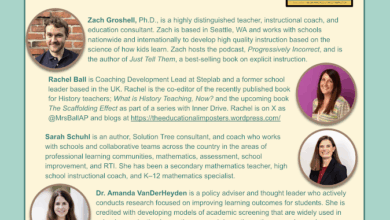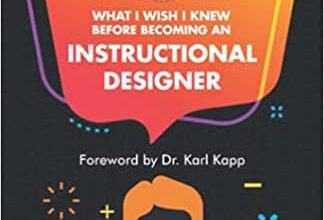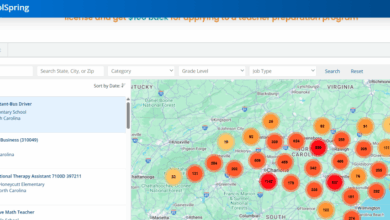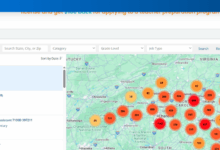A Few Ideas for Building a Whole School Reading Culture – Pernille Ripp
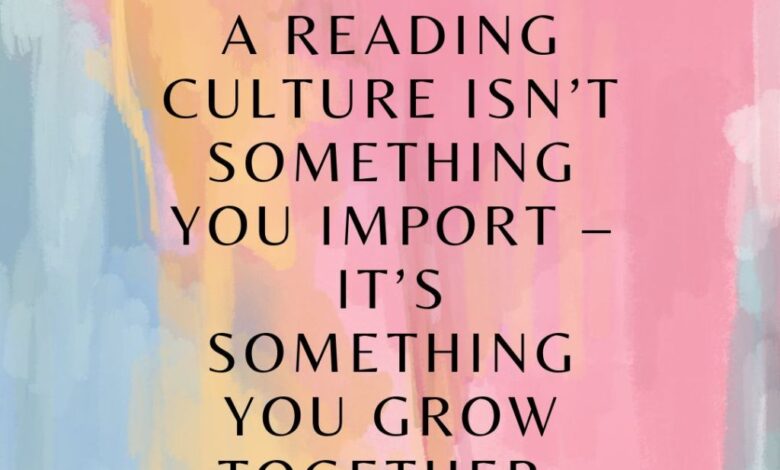

Last week, I was surprised to be asked to speak at another Danish school about the joy of reading to their 4th-9th grade students. Surprised because I am not really anyone who is invited to anything here in Denmark. And also; when was thelast time I went out to speak to students that weren’t my own?
At first, I was pumped. Getting to talk reading and sharing book joy is something that keeps me smiling. But then, as I thought some more about it, I realized that I was the wrong person to bring in.
Not because I couldn’t do the talk. I can. But because the work that might need to happen is work that needs to happen before someone like me comes in. I don’t believe that an outsider – even someone like me who lives and breathes books – can create the lasting impact they’re hoping for. A spark yes. Inspiration ,yes. But without a foundational change in how we view reading in our buildings, all I will be, is a flash. Someone who (hopefully) created joy, but didn’t really impact the culture, at least not yet.
Instead, I believe the real magic happens when we co-create a shared reading culture within your own school walls. When time is specifically made to decide o which type of reading culture you want to have, and we then take the time not only to protect what is already working, but also create new initiatives.
The best reading culture doesn’t come from one-off visits, but from sustained, daily practices that live and breathe in your classrooms and hallways. It’s about fostering local reading connections: Who are your reading role models? Who will lead the charge and share their own reading journeys, not just during a special event, but every single day?
This is why when we want to build reading joy and ownership among students, it’s essential to think beyond a single day or a single guest speaker. While guest speakers and single days can create the momentum, we need more to keep it going. We need to invest in the small, consistent acts that make reading feel alive, relevant, and shared.
So, what does that look like in practice? Here are some ideas for how you might get started – but don’t forget to also include your students. What would they say the focus should be? What would they say is working? What would they say needs to change?
Readers as Role Models and Community Builders
- Student reading ambassadors: Choose students who can share book recommendations, host quick booktalks, or lead reading events across grade levels. Their excitement will hopefully spread.
- Staff reading showcases: Create a “We’re Reading…” wall where teachers and staff post photos with their current reads, along with a short note about what they love about them. Let students see that reading isn’t just for kids – it’s for everyone. Or do it individually, I have shared my “Mrs. Ripp is currently reading and loving…” wall many times.
- Cross-grade reading buddies: Pair older students with younger ones. Let them read aloud, share favorites, and have conversations about books. It’s about connection and mentorship, not just fluency.
- Teacher Reading Swap: Each month, two or three teachers “swap” their current read and do a short booktalk for the other’s class. It’s a great way to cross-pollinate reading excitement and show that adults read widely too.
- Surprise Guest Readers: Secretly invite parents, local authors, or even the school custodian to pop into classrooms to read a short passage from a book they love. Let them share why it matters to them – it builds authentic connection.
- Digital Book Shoutouts: Start a “Reading Reel” on your school’s social media: teachers and students record 30-second videos sharing a book they’re obsessed with. It’s quick, it’s relatable, and it makes reading feel cool and visible.
- Classroom “Book Pods”: Instead of traditional reading groups, let small student “book pods” form around a shared interest (like graphic novels, sports, fantasy, etc.). They self-organize discussions, book swaps, or mini-displays.
Celebrations and Rituals Around Reading
- Reading Ritual Starters: Start or end the day with a tiny “bookish moment” — a teacher shares a one-minute excerpt from what they’re reading, or a student shares a sentence they loved from their book. A quiet, daily sprinkle of reading.
- Bookmarks of the Week: Students create bookmarks with a favorite quote or character from what they’re reading and swap them with classmates. A small but personal way to celebrate reading lives.
- Window Wonders: Encourage classes to decorate a window or small bulletin board with their current favorite reads. It’s not about big displays — it’s about little visual peeks into reading life, shared daily.
- Quiet Reading Buddies: Once a week, two students pair up and read their own books side by side, no talking. Just sharing quiet reading time — the focus is on the joy of reading with someone, even in silence.
- One New Word: Each day, invite a student to share one interesting word they came across while reading. It’s a micro-moment of wonder and wordplay that sparks conversation without taking over the day.
- Mini-Postcard Reviews: Students write a tiny “review” (one or two sentences) on a sticky note or postcard for a book they finished. Collect them in a communal jar or box — a low-key, ongoing celebration of finished reads.
- Reading Stretch: Between transitions, teachers read a single sentence from their current read aloud. It’s a way to infuse reading into those spare minutes, normalizing it as a shared part of school life.
- Collective reading challenges: Instead of focusing on individual reading logs, have classes or teams set collective goals – like reading enough to travel (on paper) to a new city or country. Celebrate their journey together.
Reflection and Building Reading Identity
- “My reading life” maps: Have students draw or write about when, where, and how they read, and what reading means to them. These reflections can be surprisingly powerful.
- Reading Time Capsules: Have students create a “reading snapshot” – what they’re reading now, their current favorites, and one book they hope to love next year. Seal it and revisit at the end of the year.
- Bookish Mood Boards: Instead of just writing about books, let students create mood boards (digital or physical) to capture the vibe of their current favorite read – colors, textures, images.
- “Why I Abandoned This Book”: Normalize that not all books work for everyone. Students can reflect on a book they didn’t finish and why and create a bulletin board. It’s a great way to build critical thinking and give permission to stop reading what doesn’t click.
- Reading Playlist Pairings: Invite students to create a short playlist that pairs with the vibe of a book they’re reading. Share the playlists with classmates – a creative, multimedia way to share bookish identity.
- “Who am I as a reader?” activities: Structured exercises where students think about their favorite genres, their reading goals, their best reading memories. This builds ownership and identity.
- Meaningful reading goals: Move beyond page or book counts. Encourage goals like, “I want to find a book that makes me think,” or, “I want to reread an old favorite and see if it still feels the same.”
Saying no to the speaking invitation wasn’t easy, after all, who knows if I will ever get a chance like that again. But without the other work happening, I am just not enough to create a culture shift for students. Not yet anyway. After all, a reading culture isn’t something you import – it’s something you grow together.
